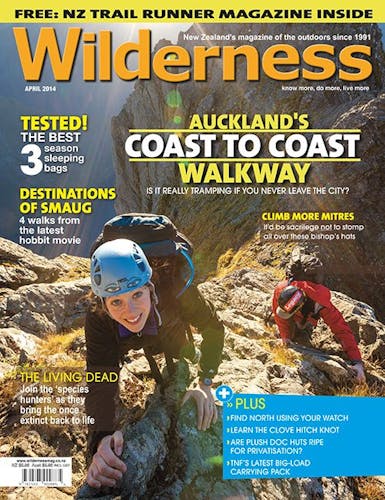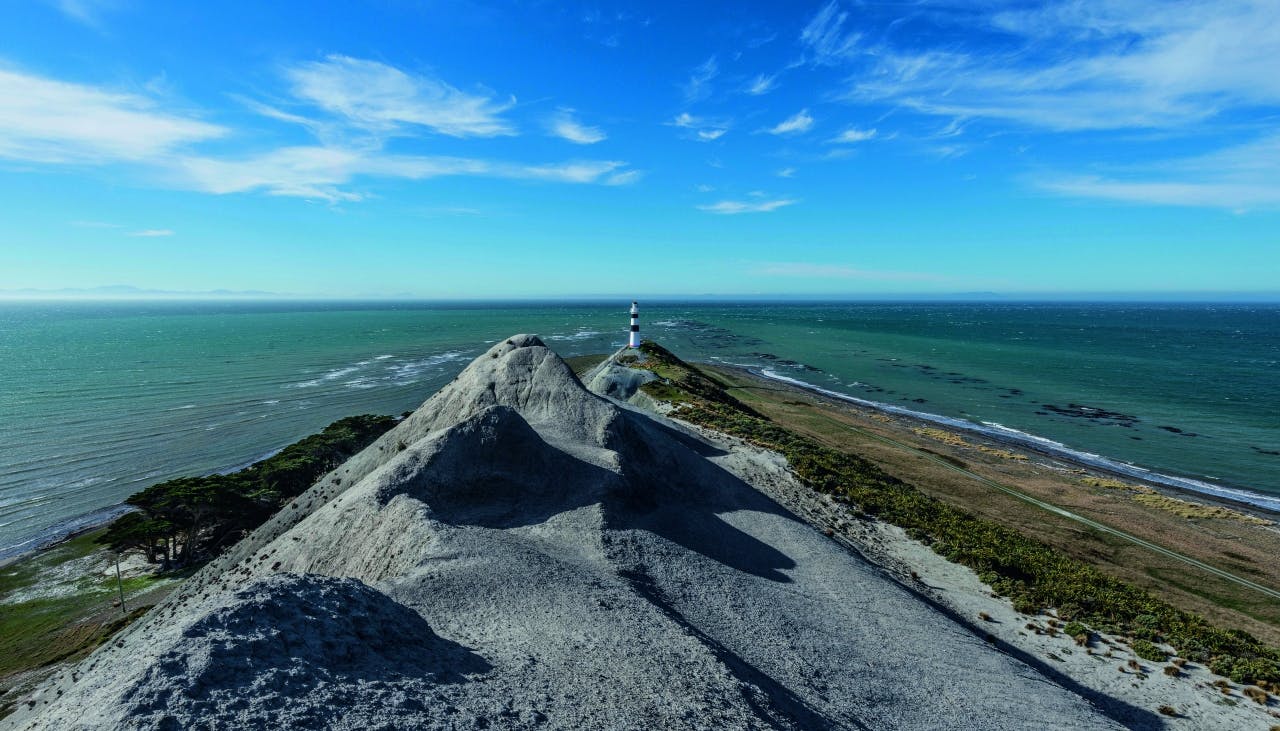These three walks offer maritime history and a sense of New Zealand’s rugged remoteness, by Grant Sheehan
Tiritiri Matangi Lighthouse, Hauraki Gulf Marine Park
In Maori, Tiritiri Matangi means an approximation of ‘looking to the wind’ or ‘wind tossing’.
The lighthouse here first shone in 1865, its cast iron tower shipped in kitset from England. It was constructed at the southern end of the island with some difficulty due to the boggy nature of the ground. The tower is an identical design to the Cape Egmont Lighthouse.
It was de-manned in 1984 but the keeper at that time stayed, becoming Tiritiri Matangi’s first conservation officer, managing the island as it became an open wildlife sanctuary. A huge replanting programme was undertaken, with much of the work carried out by thousands of volunteers from around Auckland. Approximately 300,000 trees were planted and today Tiritiri Matangi remains an open sanctuary, run by DOC. There are kiwi, takahe, kokako, stitchbirds, and brown teal, to name a few of the many birds found here. Tuatara were reintroduced in 2003. There are lush bush walks around the island which can be freedom walked or, recommended, done with a guide. It is a deservedly popular day trip from Auckland.
The ferry from downtown Auckland involves a pleasant 25 minute journey that also takes in Bean Rock Lighthouse.
Kaipara Head Lighthouse, Kaipara North Head Lighthouse Historic Reserve
Kaipara Harbour is New Zealand’s largest natural harbour and was first established as a port in the 1840s. Its entrance is flanked by large, endlessly shifting sandbars that sit just below the water’s surface and are referred to locally as ‘the graveyard’. To the tall sailing ships of those early times calling in here to collect cargoes of kauri timber, negotiating the harbour was a challenging and dangerous task – 125 shipwrecks occurred along this coast between 1839 and 1944.
When I first visited the lighthouse, on foot, in the late 1980s, it was surrounded by trees that were threatening to overwhelm the tower and were contributing to a build up of wind-blown sand. Today, the shapely wooden lighthouse still stands on the sandstone outcrop while the trees have been removed. It has recently been restored to its original condition by the New Zealand Historic Places Trust and, repainted and repaired, the building is refreshed for its continuing role as a tourist attraction.
From the village of Pouto, the walk to the lighthouse is a 14km round trip along the beach. It is imperative to check the tides and time your walk accordingly, as the beach is underwater in places at high tide.
If you are feeling energetic, rewarding views can be had from the huge sand dunes near the lighthouse.
Cape Campbell Lighthouse. Eastern Marlborough
Cape Campbell lighthouse was built in 1870, after a series of shipwrecks occurred on or near Cape Campbell, including that of the whaling ship Alexander in the 1850s.
To make the lighthouse more prominent against the backdrop of the white mud and sandstone hills, its tower was painted black with white stripes. It is one of just three striped lighthouses in New Zealand – the other two are at Dog Island and Cape Palliser.
The recent Seddon Earthquakes caused several slips in hills around the cape and moved Cape Campbell 18cm closer to Australia.
The lighthouse can be reached from Marfells Beach, a full day’s return walk. Spring high tides can block access around the foot of bluffs.
Wildlife includes seals, seabirds and, on occasion, dolphins. Local operators run a multiday private walk and horse trekking trips to the lighthouse.
– Grant Sheehan is the author of Lights in the landscape: New Zealand lighthouse







